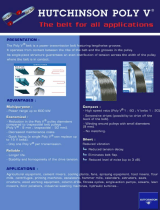PRODUCT
T
ECHNICAL INFORMATION
CONCEPT AND MAIN APPLICATIONS
P 1/ 8
Specification
Standard equipment
Optional accessories
Continuous Rating (W)
Voltage (V) Cycle (Hz)
Input Output
Max. Output (W)
110
120
220
230
240
5.9
6.5
3.0
2.9
2.7
50/60
50/60
50/60
50/60
50/60
620
---
620
620
620
280
360
280
280
280
650
650
650
650
650
Current (A)
Dimensions: mm (")
Width (W)
Height (H)
Length (L)
285 (11-1/4)
158 (6-1/4)
158 (6-1/4)
Model KP0800 has been developed as the successor model of
N1900B and 1902.
Additionally to the same well balanced design for easy handling,
features the following main advantages;
Planing depth adjustment knob for precise depth setting
Power input of 620W
New aesthetic design
Also available with plastic carrying case as Model KP0800K.
L
W
H
* Weight according to EPTA-Procedure 01/2003
82 (3-1/4)
2.5 (3/32)
9 (11/32)
2.6 (5.7)
Brazil, Australia: 2.0 (6.6), Other countries: 2.5 (8.2)
17,000No load speed: min-1=rpm
Planing width
Planing depth
Shiplapping
Net weight*: kg (lbs)
Double insulation
Power supply cord: m (ft)
Protection against electric shock
Capacities: mm (")
Planer blade (re-sharpenable type) or T.C.T. Mini planer blade (disposable type)
Sharpening holder assembly (for countries using re-sharpenable type Planer blade)
Dressing stone (for countries using re-sharpenable type Planer blade)
Blade gauge assembly
Socket wrench 9
Guide rule
Dust nozzle
Plastic carrying case (for KP0800K)
Note: The standard equipment for the tool shown above may vary by country.
Planer blade (re-sharpenable type)
T.C.T. Mini planer blade (disposable type)
Set plate (for countries using T.C.T
Mini planer blade)
Dust bag assembly
Blade gauge assembly
Sharpening holder assembly
Plastic carrying case
Guide rules
Extension guide set
Dust nozzle
Elbow
Models No.
Description
KP0800
Power Planer 82mm (3-1/4")









